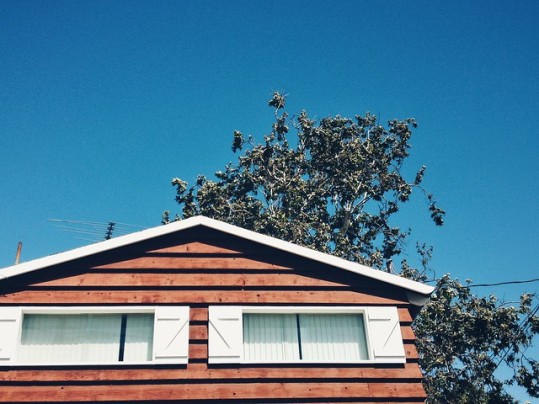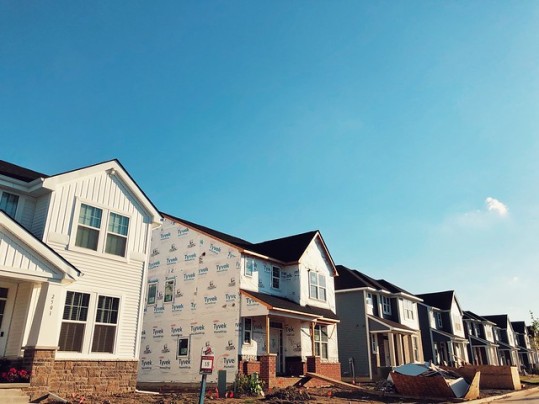At the beginning of the year, most analysts were predicting a hot spring sales season for the housing market. But in the wake of the coronavirus outbreak, a lot of prospective home buyers put their plans on hold. Now, it appears they’re ready to buy. According to a new analysis, contract signings were up 15 percent month-over-month during the last week of June and the typical home for sale was sold in just 19 days. That’s good news for the housing market, as it means spring’s crashing sales numbers will likely see a quick summer recovery. But it also means that potential home buyers need to be prepared for a competitive market. Since the inventory of homes for sale hasn’t rebounded as quickly as buyer demand has, there are more home buyers than available homes. In many markets, that’s led to increasing prices, bidding wars, and fewer choices for interested buyers. For example, home prices in cities like San Jose and Seattle were actually falling last year at this time. Now, because of the market’s imbalance, prices have turned around and are up more than 5 percent in both metros. (source)
Archive for July 2020
The Increasing Popularity Of Guest Dwellings
Accessory dwelling units (ADUs) are defined as secondary, self-contained housing units located on the same lot as a primary single-family home. In other words, guest houses, in-law apartments, garage apartments, and carriage houses. In most cases, these dwellings include a bathroom, kitchenette, living area, and a separate entrance. They’re also increasingly popular among Americans living in regions where population growth and cost-of-living is on the rise. In fact, according to a newly released study from Freddie Mac, properties with ADUs represented 4.2 percent of homes sold last year, which is up from 1.1 percent in 2000. And, if that doesn’t seem like a lot of growth, consider the fact that the number of property listings with ADUs grew by an average of 8.6 percent year-over-year between 2009 and 2018. Their quickly rising popularity makes sense, though. Affordable housing in major urban areas is more difficult to find these days and ADUs provide an option for all age groups, as well as both renters and buyers. That’s why these units have been multiplying over the past few years and especially in fast growing metros like Los Angeles, Portland, Dallas, Seattle, and Miami. (source)
Would You Buy A Home Sight Unseen?
The coronavirus outbreak has caused us to change a lot about the way we get things done. Everything from grocery shopping to getting a haircut has undergone some rethinking. The home buying process is no exception. Fortunately, the adjustments the real-estate industry put into place have been successful so far. In fact, the option to tour homes virtually or via FaceTime has a significant share of buyers saying they’d be comfortable buying a house without ever seeing it in person. Recent surveys show nearly 40 percent of buyers say they would, which is up from 25 percent in surveys done earlier this year. Additionally, there was close to a third of current survey participants who said they’d like the option to buy and sell virtually even after the outbreak ends. Obviously, that still leaves a majority of buyers who feel they’d need to see a home in person before they’d make an offer. But the success of virtual tours benefits them as well – as an online tour can be used to narrow options down, so buyers have fewer homes to see when they do go out. Like a lot of things, real estate has had to adapt quickly. The good news is that the changes it underwent look like they’ve increased convenience and speed for both buyers and sellers. (source)
Builder Confidence Back To Pre-Pandemic Levels
Whether you’re looking to buy a new house or not, what’s happening in the new home market should matter to you. That’s because, when the new home market is doing well. builders build more houses. And when more new homes are built, it creates additional supply which helps keep home prices from spiking. In short, if builders are optimistic about the market, it’s an encouraging sign. That’s why the National Association of Home Builders conducts a monthly survey tracking how builders feel about current conditions and their expectations for the coming months. In July, their Housing Market Index – which is scored on a scale where any number above 50 indicates more builders view conditions as good than poor – jumped 14 points to 72. Chuck Fowke, NAHB’s chairman, says there are a number of factors boosting builder confidence right now. “Builders are seeing strong traffic and lots of interest in new construction as existing home inventory remains lean,” Fowke said. “Moreover, builders in the Northeast and the Midwest are benefiting from demand that was sidelined during lockdowns in the spring. Low interest rates are also fueling demand, and we expect housing to lead an overall economic recovery.” Among its components, the index found current sales conditions and expectations for the next six months experienced the biggest month-over-month rebound. (source)
Mortgage Rates Continue Downward Trend
According to the Mortgage Bankers Association’s Weekly Applications Survey, average mortgage rates fell again last week, with rates down for 30-year fixed-rate mortgages with conforming loan balances, loans backed by the Federal Housing Administration, and 15-year fixed-rate loans. Rates for jumbo loans were flat from the week before. The drop in rates led to a 12 percent increase in refinance activity. Purchase demand, on the other hand, was down for the week, though still 16 percent higher than last year at the same time. Joel Kan, MBA’s associate vice president of economic and industry forecasting, says demand from buyers remains strong. “The drop in rates led to a jump in refinance activity to the highest level in a month, with refinance loan balances also climbing to a high last seen in March,” Kan said. “Purchase applications fell over the week but remained 16 percent higher than a year ago – the eight consecutive week of year-over-year increases. Purchase activity remains relatively strong, despite the continued economic uncertainty and high unemployment caused by the ongoing pandemic.” The MBA’s weekly survey has been conducted since 1990 and covers 75 percent of all retail residential mortgage applications. (source)
Today’s Movers Motivated By A Desire For Space
While the features we look for in a house often change from one season to the next, the reasons we decide to move in the first place remain fairly consistent. Things like marriage, starting a family, or wanting to be closer to loved ones and friends are common factors that might influence a move. But, in the wake of the coronavirus, there have been some changes. For example, according to one new analysis, the number one thing motivating people to move these days was a desire for more space. It seems spending more time at home has Americans reconsidering what’s important to them in a house. That would explain the current trend toward home offices, bigger yards, more privacy, and homes in suburban and rural areas. It’s obvious that the pandemic has had an influence on today’s buyers, what’s less obvious is whether or not these trends are here to stay. Only time will tell. But with an increasing number of businesses allowing their employees to work remotely, the popularity of bigger, suburban houses with a dedicated home office may not just be another passing fad. (source)
Mortgage Credit Tightens Most For Jumbo Loans
Mortgage credit availability refers to how easy it is for a borrower to get approved for a loan. When credit is less available or tighter, prospective borrowers’ financial standing and credit history have to meet a higher standard than when it’s more available or looser. The Mortgage Bankers Association tracks changes in credit availability with their monthly Mortgage Credit Availability Index. In June, it found that credit availability fell 3.3 percent from the month before, indicating that lending standards tightened. Joel Kan, MBA’s vice president of economic and industry forecasting, says jumbo loans saw the the biggest change. “Mortgage credit supply dropped again in June, as investors further reduced their willingness to purchase jumbo loans and those with lower credit scores,” Kan said. “Lenders are navigating a gradual economic and housing recovery that is still facing headwinds from the ongoing COVID-19 pandemic.” The index shows that the availability of jumbo loans suffered the biggest decline, dropping 7.3 percent. Conforming loans, on the other hand, were down just 1 percent, while government loans fell 2.8 percent. The conventional MCAI was down 4.1 percent from May. (source)







